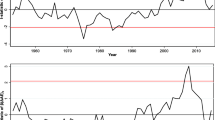Abstract
The paper develops a concept of transitory earnings and contrasts this source of earnings to “core” (or recurring) earnings. It is shown that any two of the following three attributes of transitory earnings imply the third: (i) forecasting irrelevance with respect to next-period aggregate earnings, (ii) value irrelevance, and (iii) unpredictability. The paper makes the case that the current “dirty surplus” items make sense, especially if one expands the valuation perspective to also allow for agency considerations.
Similar content being viewed by others
References
Govindaraj, S., and R. Ramakrishnan. (1995). “Accounting Earnings Processes, Intertemporal Incentives and Its Implication for Valuation.” Unpublished paper.
Ohlson, J. (1995). “Earnings, Book Values, and Dividends in Equity Valuation.” Contemporary Accounting Research 11, 661–687.
Ohlson, J. (1999). “Earnings, Book Values, and Dividends in a Stewardship Setting with Moral Hazard.” Contemporary Accounting Research 16, forthcoming.
Ohlson, J., and X. J. Zhang. (1998). “Accrual Accounting and Equity Valuation.” Journal of Accounting Research (supplement), 85–12.
Stark, A. W. (1997). “Linear Information Dynamics, Dividend Irrelevance, Corporate Valuation and the Clean Surplus Relationship.” Accounting and Business Research 27, 219–228.
Author information
Authors and Affiliations
Rights and permissions
About this article
Cite this article
Ohlson, J.A. On Transitory Earnings. Review of Accounting Studies 4, 145–162 (1999). https://doi.org/10.1023/A:1009653114699
Issue Date:
DOI: https://doi.org/10.1023/A:1009653114699




